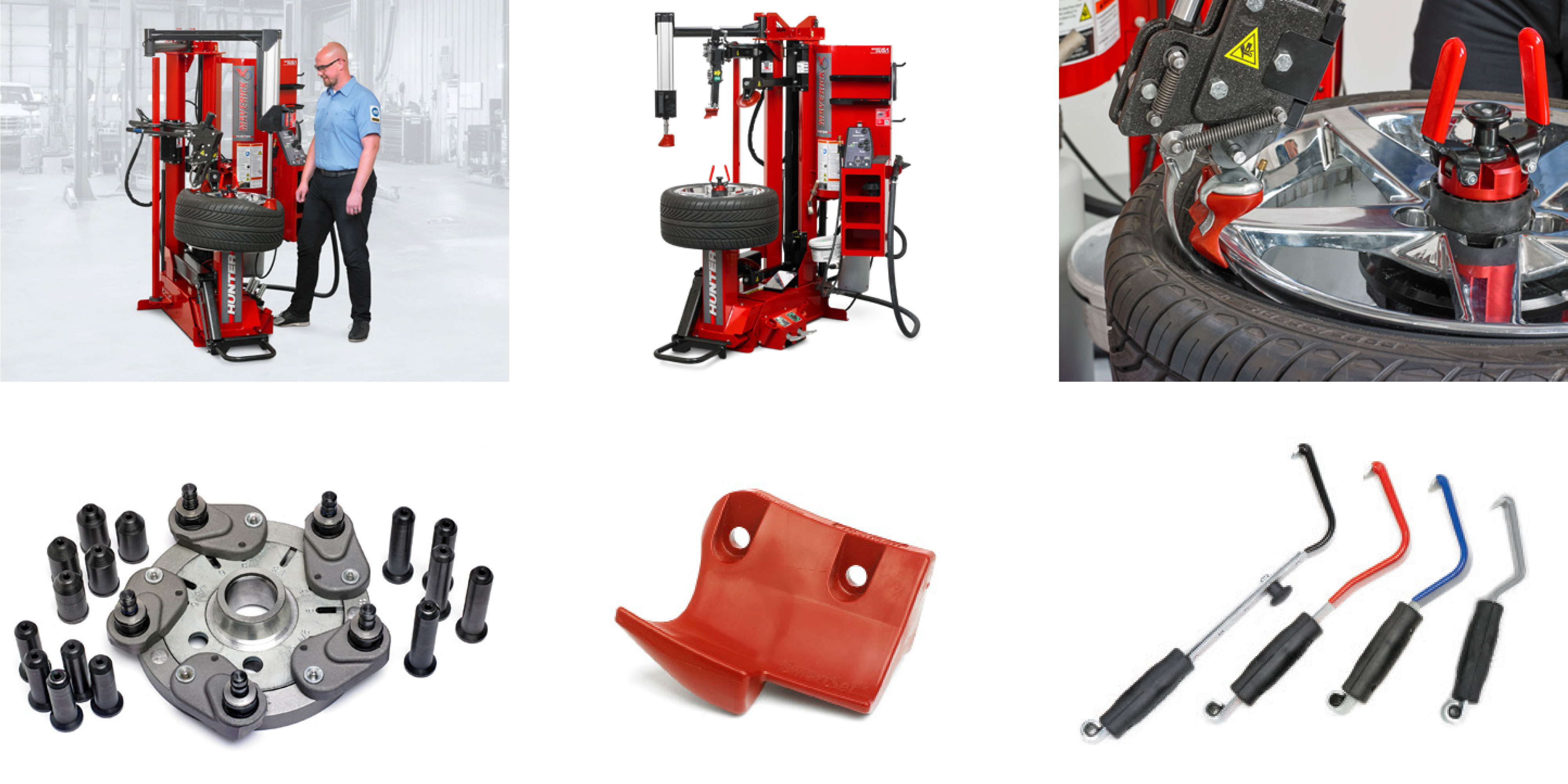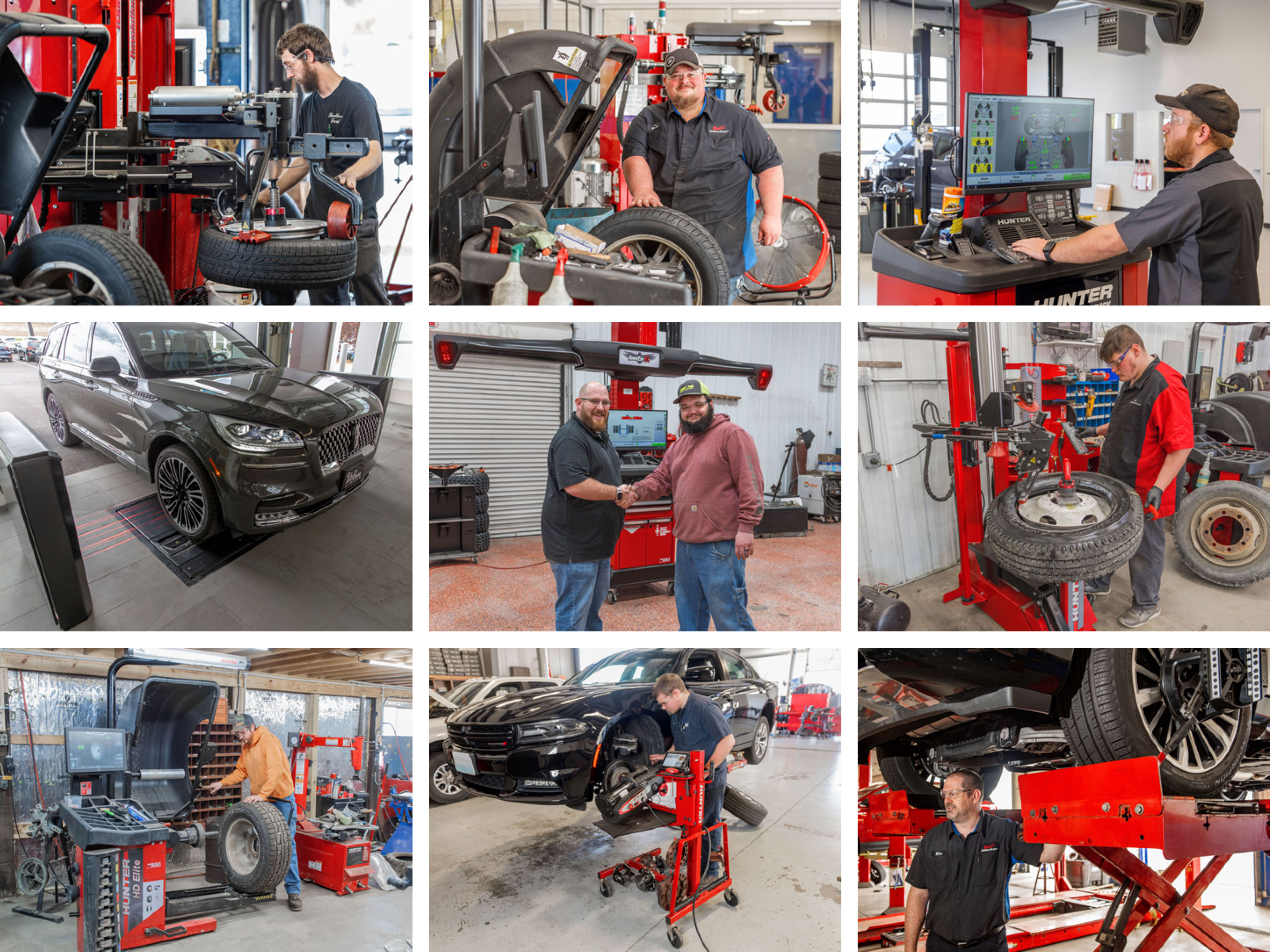Photos of equipment in use in shops with technician wearing shop uniform
(if available) and safety glasses. (Safety glasses and any other necessary
safety gear are required)
Ideal shots include shop elements around Hunter equipment. If possible, remove smaller unnecessary items such as trash cans, water bottles, soda cans, etc. There is no need to clean equipment or the shop — it should still look real.
Proper procedures ensure that photos are accurate. (Using a tire changer as an example) Instruct technician to start process of tire change. Take photos of entire process of tire change showing entire machine/tech from different angles and heights/levels. Repeat entire process taking detail photos (close up), focusing on tools, buttons, accessories, etc. Even with close-up shots, always leave room around composition to allow for cropping as needed.
Technicians smiling always make for better photos.
Avoid incorrect procedures such as a technician doing a turn steer by turning wheels by hand rather than steering wheel.
If a Hunter Representative is present, take photos of them interacting with shop personnel - shaking hands, smiling, training, etc.
Take photos of outside of building including shop sign/name.
Signed photography release forms are required anytime people are being photographed, as is a release form for any location not owned and operated by Hunter Engineering. Reach out to contact.hunter@hunter.com for more details.




